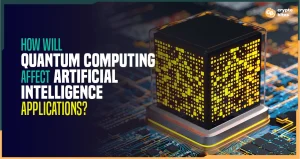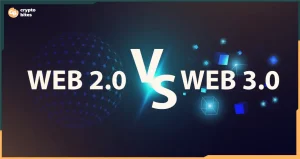
The Ultimate Guide To Cosmos And ATOM – How Cosmos Works And Solves Byzantine General’s Problem
Since its inception, Cosmos has been heralded as the “Internet of Blockchains.” Sounds impressive, right? But what exactly does that mean, and how does Cosmos work?
What sets Cosmos and ATOM, its native token, apparent from other blockchains? Whether these questions keep you up at night or you’re curious about Cosmos – you’ve come to the right place.
Join us for a breakdown of Cosmos and what it brings.
What Is Cosmos Exactly?
Cosmos defines itself as “a decentralized network of independent parallel blockchains, each powered by BFT consensus algorithms like Tendermint consensus.” Okay, great, but let’s back up the truck a little bit.
To understand what Cosmos is, it’s helpful to first understand the problem it solves. So let’s get all metaphorical to explain things.
Imagine the old pioneer days when the government opened a massive piece of land and told bold adventurers to get out there and settle it. So everyone packs up in their wagons and heads out to stake their claim.
Soon, many different towns have been created, each with its own set of laws. The issue is that no roads connect any of these other towns.
There are no cell phones or internet in this metaphor, so none of the towns can communicate with each other. Therein lies the problem.
The “Internet of Blockchains” Concept
Cosmos envisioned a more communicative future, establishing its own big ass parcel of land. In this case, the “land” is an open-source layer 0 blockchain.
Imagine it sort of like a state which flung open its doors for pioneers to settle. In the free state of Cosmos, you can wagon on in and establish your own blockchain town (hub) and custom environments (zones).
Your blockchain town can also establish its own governance style, independent of those your neighbors happen to be using. The difference is that in the free state of Cosmos, there is a whole system of roads allowing all the individual blockchains in the state to communicate.
Technically speaking, these roads are known as Inter-Blockchain Communications (IBC) protocol. Simply put, the Cosmos Hub is a decentralized blockchain where independent blockchains can coexist in harmony instead of on their own islands.
When it comes to Cosmos vocab, there are two core terms you need to know. Cosmos is built on two central components: its software development kit (SDK) and its Tendermint Core consensus mechanism.
Cosmos SDK
The Cosmos SDK is a big perk of using Cosmos to build your own blockchain. It’s an open-source software package that helps developers make their own blockchains from scratch, with pre-built modules, or a mixture of the two.
The pre-built modules are similar to the drag-and-drop tools on a website-building site like Wix. So yeah, you can still build your own custom website, but you don’t necessarily have to speak code to do it.
As you can imagine, this speeds things up a great deal for developers. So if you’re looking to get a new blockchain up and running in weeks or months instead of years, then Cosmos is a great place to do it.
The Cosmos SDK also makes it easy to connect to other towns…er, blockchains on the Cosmos Network. This can go a long way towards upping your liquidity and adaptability game.
Tendermint Consensus Mechanism
While the Cosmos SDK is all about the application layer, Tendermint tackles blockchain development’s consensus and networking layers. For those of you who speak blockchain, Tendermint is a proof-of-stake (PoS) Byzantine fault tolerance (BFT) consensus mechanism.
For the rest of us, a BFT consensus mechanism is designed to solve a dilemma dubbed The Byzantine General’s Problem in the 1980s. The dilemma asks us to imagine a bunch of different generals, each with their own army, lurking in various areas around a city they all plan to attack.
You don’t have to know much about military strategy to realize it’s pretty important that all the generals come to a consensus before making a move. This issue is that all the generals must rely on a series of courier messages to reach a group decision.
But what if one of the couriers gets captured or drops dead of dysentery en route? Or maybe an imposter tampers with the messages?
There’s even the possibility of a particularly feisty general going rogue and deciding to act maliciously. That’s where the Byzantine fault tolerance (BFT) system comes in.
Simply put, a BFT is decided to resist such disasters and keep the system running smoothly even if some nodes fail or go rogue. At least 2/3 of a system’s nodes need to agree to finalize any decisions.
In other words, the system can resist up to 1/3 of the nodes going nuts or being infiltrated by bad actors. Cosmos’ consensus mechanism also works on a proof-of-stake (PoS) model, which is much cheaper and 99% more carbon friendly than proof-of-work (PoW) models.
Cosmos 2.0
In late 2022, Cosmos released a new whitepaper detailing what’s in store for the blockchain soon. The 27-page document outlines changes that will be rolling out to help the Cosmos ecosystem evolve over the next three years.
While the paper itself is a bit heady, it does address one of the critical issues for ATOM investors. Since all the blockchains on the Cosmos Hub are allowed to have their own tokens, there’s never been much of a need for Cosmos’ native ATOM token.
Unsurprisingly, this has kept it from ever really growing much in value. That’s why Cosmos 2.0 is introducing some innovative ideas that will make ATOM more valuable while making the ecosystem better as a whole.
Here’s a look at some of the features that will soon be coming to a Cosmos ecosystem near you:
Interchain Security
There’s strength in numbers. Cosmos will soon allow individual blockchains in their ecosystem to capitalize on this maxim by borrowing validators from other networks.
In terms of our metaphor, imagine a small town in Cosmos land. While the town is happy being smallish, it’d be in deep trouble if a large gang of rogues decided to roll in and take over.
Interchain security will allow it to bus in high-end security from other, larger towns.
Liquid Staking
Cosmos is one of the many blockchains that allows staking, which basically involves loaning your tokens to validators for a certain amount of time. Validators then use them to secure the blockchain via Comsos’ PoS system.
While staking ATOM can earn an average of 9.7% APY and voting rights, the downside is that your assets are locked up for a specified time. That’s why Cosmos 2.0 plans to integrate an in-network liquid staking code.
As opposed to regular staking, liquid staking offers a lot more flexibility. When you go the liquid staking route, you receive what’s known as an st token that holds the same value.
Imagine you have an ATOM token lying around that you don’t plan to spend any time soon. Might as well put it to work.
Liquid staking allows you to deposit the ATOM in exchange for a stATOM worth the same amount. While earning rewards on the initially staked ATOM, you can use the stATOM the same way you would the original.
Trade it, stake it with another liquid stacking protocol, or do whatever else you like with it until it’s time to cash in. Just be aware that you’ll need a full stATOM to trade back in for the original when the time comes.
Hopefully, this has helped give you a better idea of what Cosmos is and why it’s so innovative. Cosmos has spawned several top projects like Osmosis, Juno, Celestia, and Secret Network.
As the hub continues to roll out more features, Cosmos will only likely grow in popularity. In the meantime, it may be worth stashing away an ATOM or two if Cosmos 2.0 ups the tokens’ price as planned.




